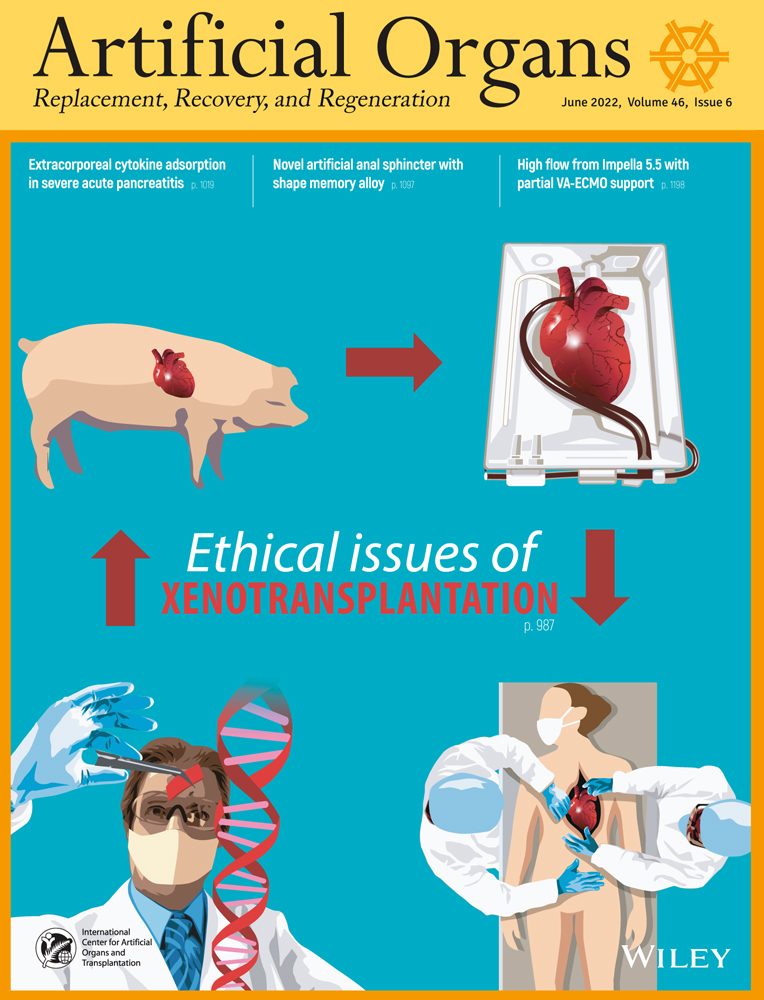Regional blood acidification inhibits coagulation during extracorporeal carbon dioxide removal (ECCO2R)
Funding information
Department of Defense, U.S. Army, Institute of Surgical Research
Abstract
Background
Consumption of platelets and coagulation factors during extracorporeal carbon dioxide removal (ECCO2R) increases bleeding complications and associated mortality. Regional infusion of lactic acid enhances ECCO2R by shifting the chemical equilibrium from bicarbonate to carbon dioxide. Our goal was to test if regional blood acidification during ECCO2R inhibits platelet function and coagulation.
Methods
An ECCO2R system containing a hemofilter circulated blood at 0.25 L/min in eight healthy ewes (Ovis aries) for 36 h. Three of the sheep received ECCO2R with no recirculation compared to five sheep that received ECCO2R plus 12 h of regional blood acidification via the hemofilter, placed upstream from the oxygenator, into which 4.4 M lactic acid was infused. Blood gases, platelet count and function, thromboelastography, coagulation-factor activity, and von Willebrand factor activity (vWF:Ag) were measured at baseline, at start of lactic acid infusion, and after 36 h of extracorporeal circulation.
Results
Twelve hours of regional acid infusion significantly inhibited platelet aggregation response to adenosine diphosphate; vWF; and platelet expression of P-selectin compared to control. It also significantly reduced consumption of fibrinogen and of coagulation factors V, VII, IX, compared to control.
Conclusions
Regional acidification reduces platelet activation and vitamin-K-dependent coagulation-factor consumption during ECCO2R. This is the first report of a simple method that may enhance effective anticoagulation for ECCO2R.
CONFLICT OF INTEREST
The opinions or assertions contained herein are the private views of the authors and are not to be construed as official or as reflecting the views of the Department of the Army or the Department of Defense. Some procedures here described are part of a blood processing technique covered by patents or pending patents: (1) International patent application: PCT/EP 2008/003661; May 7, 2008, (2) Italy: MI2007A000913; May 7, 2007, (3) Italy: BO2012A000404; July 26, 2012; Bologna, Italy.




